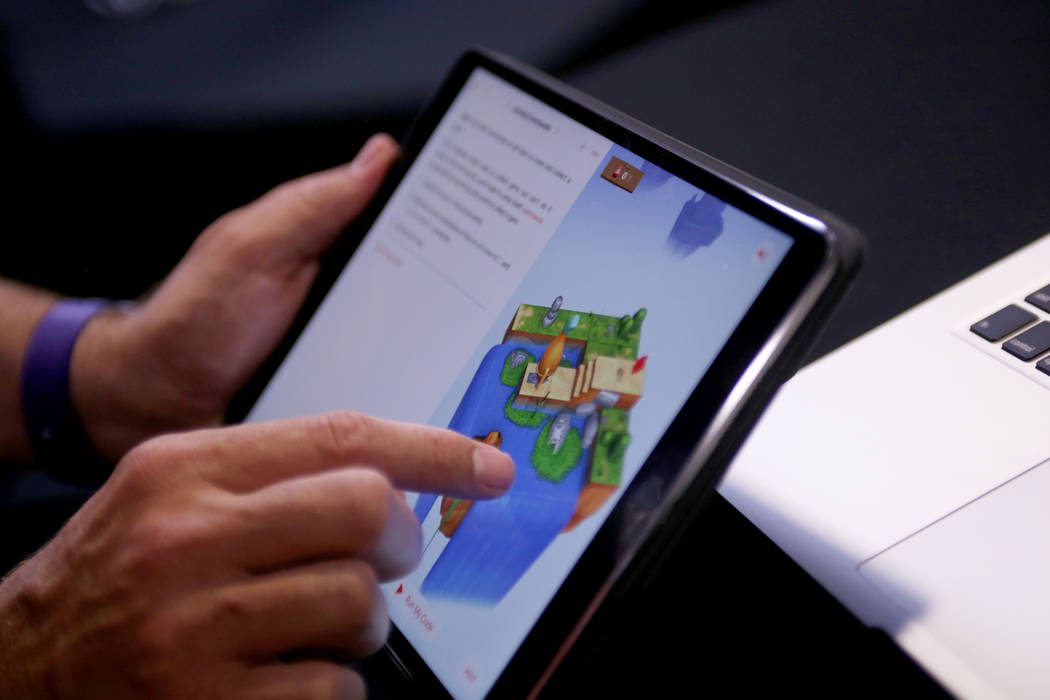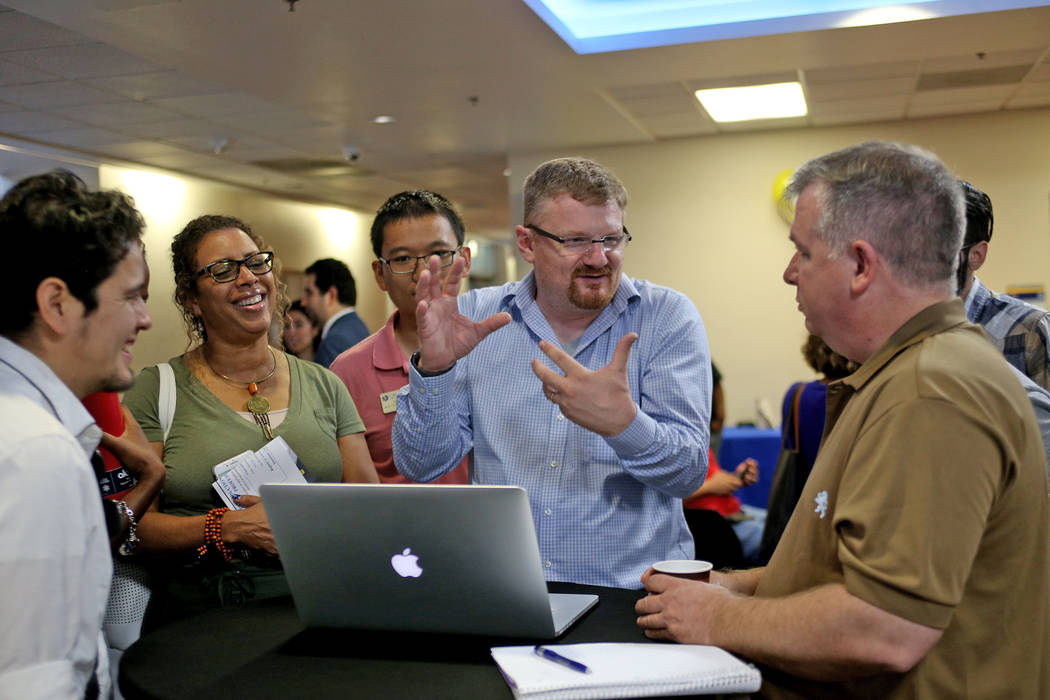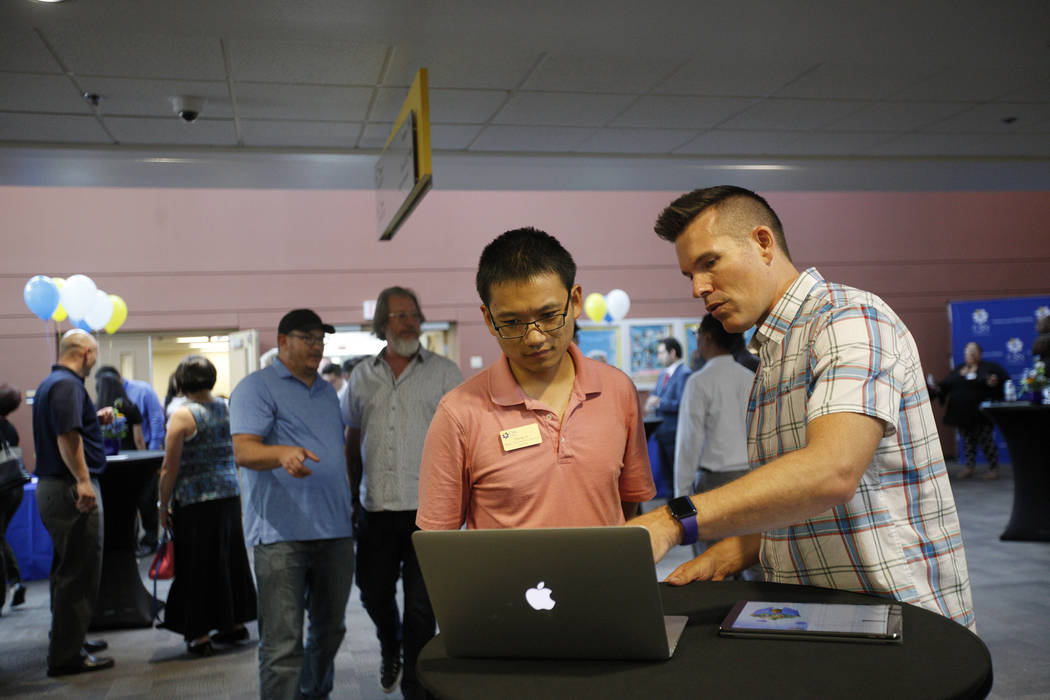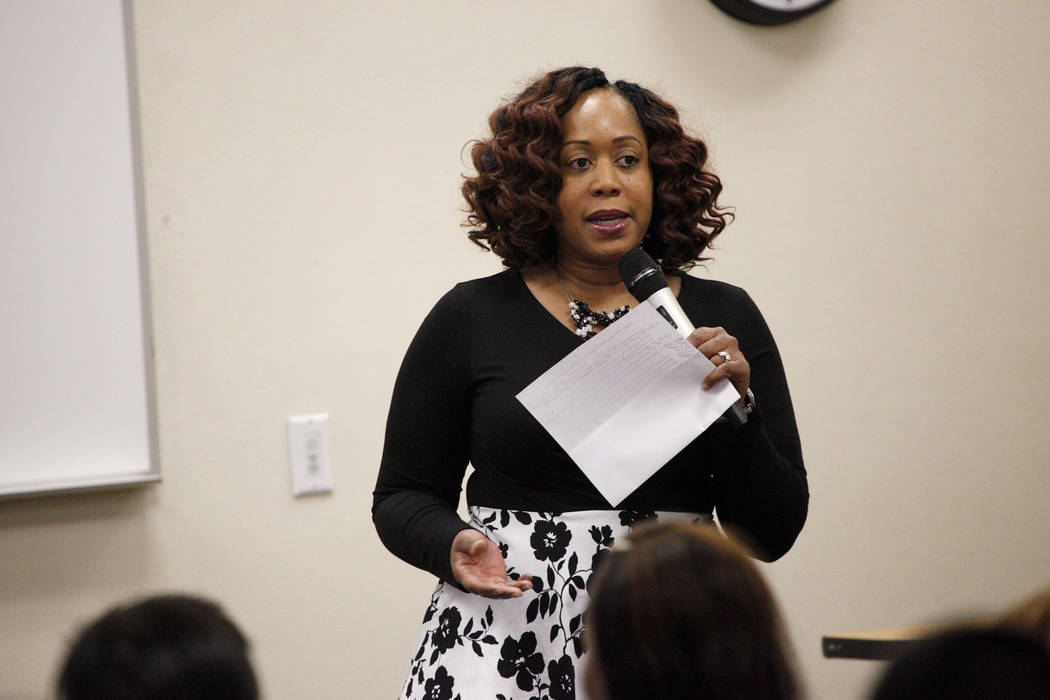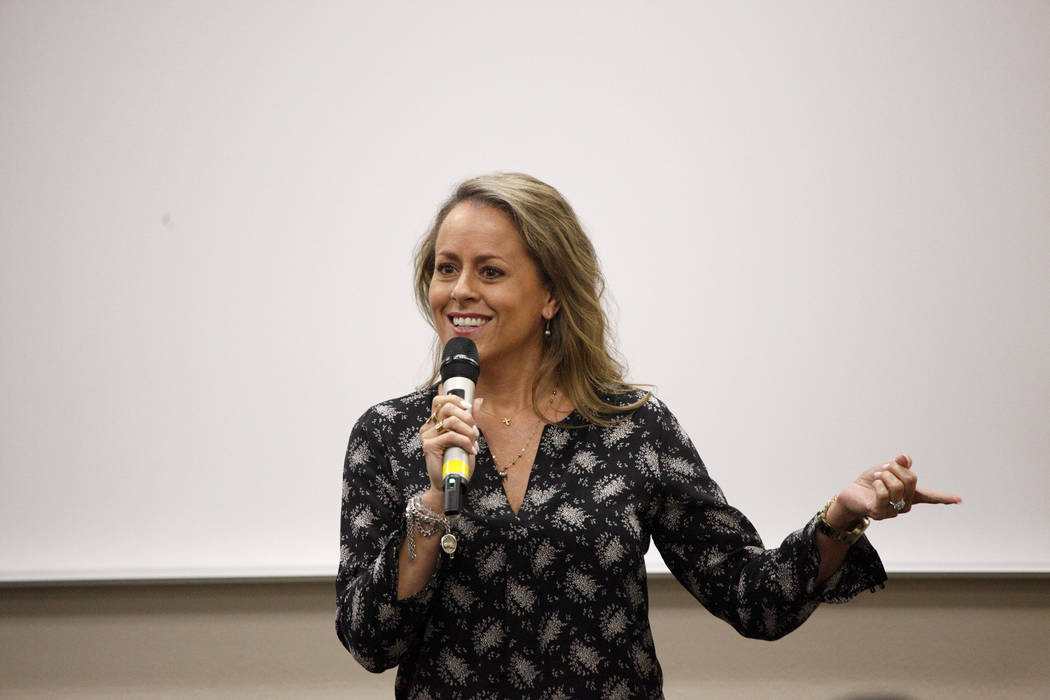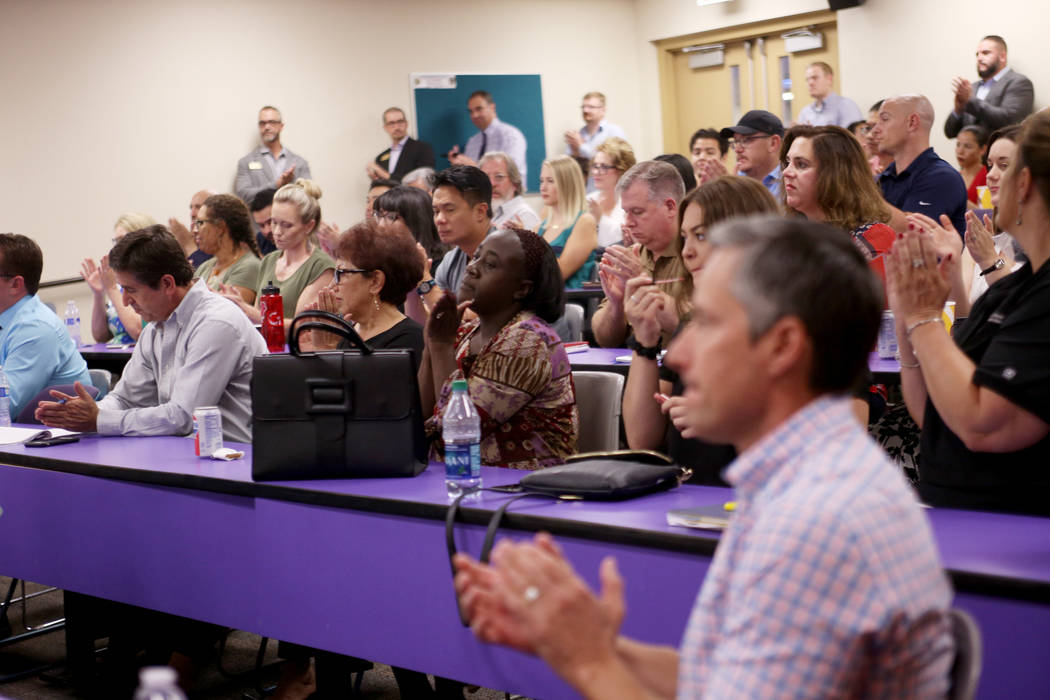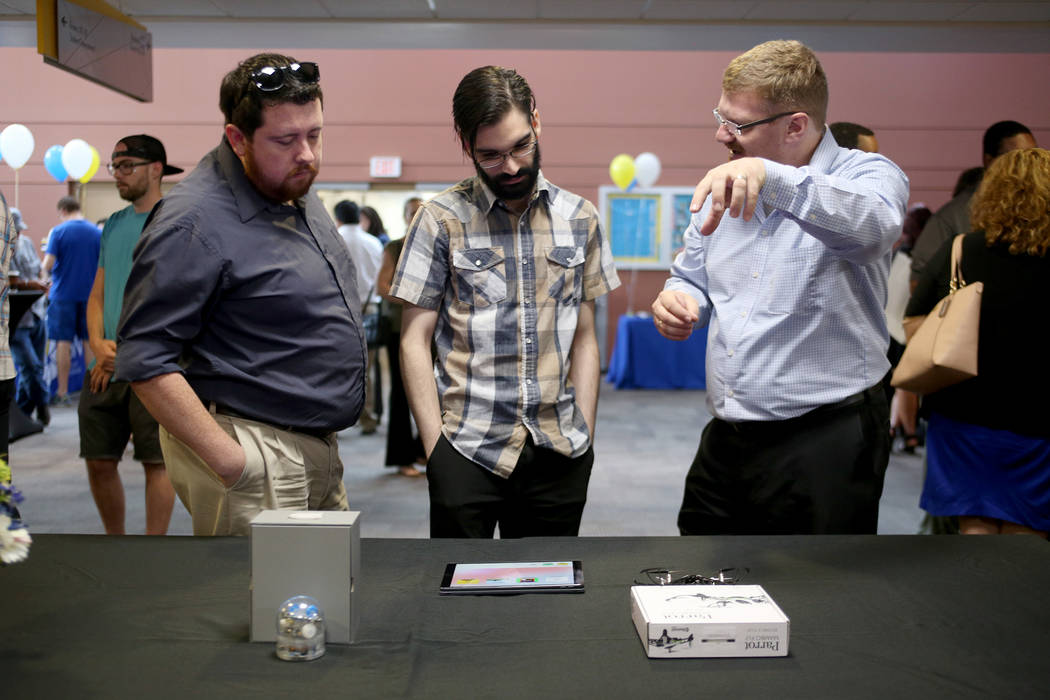CSN to teach Apple’s open-source programming language
There’s an app for everything. They bring food to doorsteps, act as DJ on road trips and even kick-start relationships.
Now, iPhone apps are assisting workforce development in Southern Nevada.
The College of Southern Nevada will be offering new courses this fall that teach Swift, Apple’s open-source programming language. Lyft and Airbnb are two examples of popular apps built with the language.
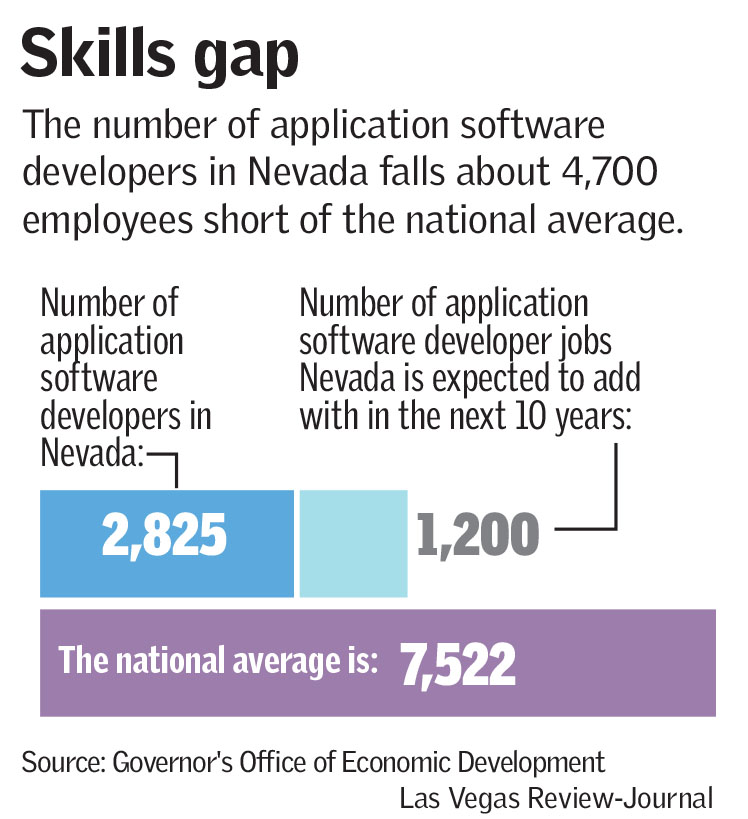
The course can help fill a growing skill gap in Nevada. There are about 1,500 software development jobs open in Clark County alone, according to a 2018 report from labor market consulting company Economic Modeling Systems International.
The average hourly wage for a position in application software development in Nevada is $48.56 per hour, according to May 2017 data from the Bureau of Labor Statistics.
Speaking at an event Thursday about the new course, Missy Young, chief information officer for Las Vegas-based Switch, said this program can help fill those in-demand, high-paying jobs.
“You can be instantly employable in a field that cannot possibly find enough talented and qualified individuals to do these jobs,” she said.
About 1,200 application software developer jobs are expected to be added in the state within the next 10 years, according to Bob Potts, research director at the Governor’s Office of Economic Development.
“That occupation is ranked (by the state) as the number one in-demand occupation,” Potts said.
Young applauded the course’s accessibility; with courses held in the afternoon, the program is available to a variety of learners, from high school students to nontraditional students.
The skill is something that can be picked up by almost anyone, Young said.
“It’s really just learning how to talk the language of a computer,” she said. “If you know how to program, if you know the languages of these computers, you will be so valuable.”
Ricardo Villalobos, executive director of CSN’s Division of Workforce and Economic Development, said the course will offer two pathways for students. They can move on to a credit-based program and earn a degree in programming or web development, or they can enter the information technology workforce immediately after the course.
“It’s going to help create a talent pool that is not meeting demand,” Villalobos said.
Contact Bailey Schulz at bschulz@reviewjournal.com or 702-383-0233. Follow @bailey_schulz on Twitter.
CSN's Swift course
CSN joins just over 200 community and technical colleges around the world that are teaching app development with Swift.
The semester-long course is comprised of three $800 sessions. Classes begin this September and will be held from 6 to 9 p.m. on Mondays and Wednesdays at CSN's Summerlin Center, located near the intersection of the Bruce Woodbury Beltway and Alta Drive.
Registration is open online at www.csn.edu/dwedswift



